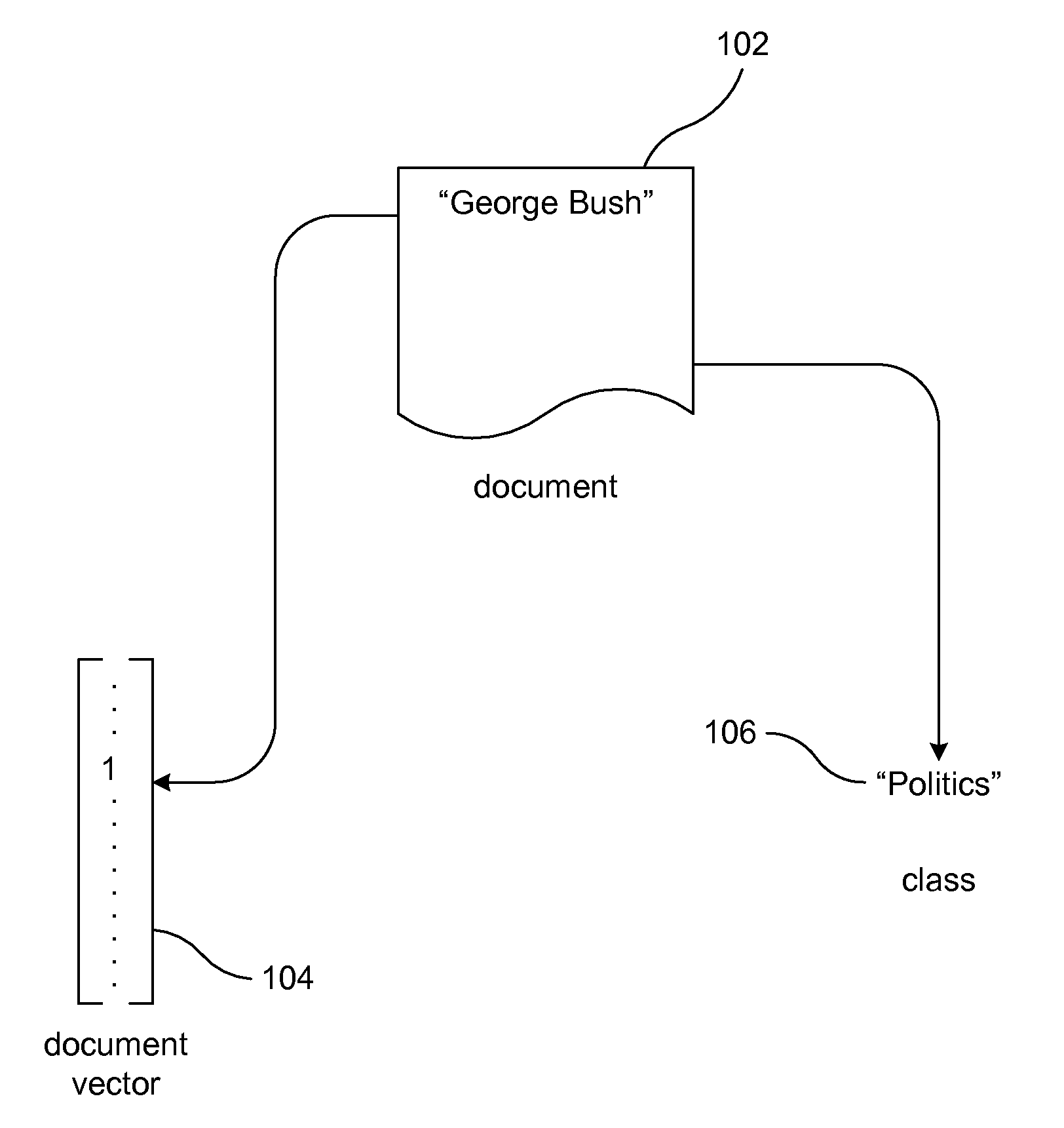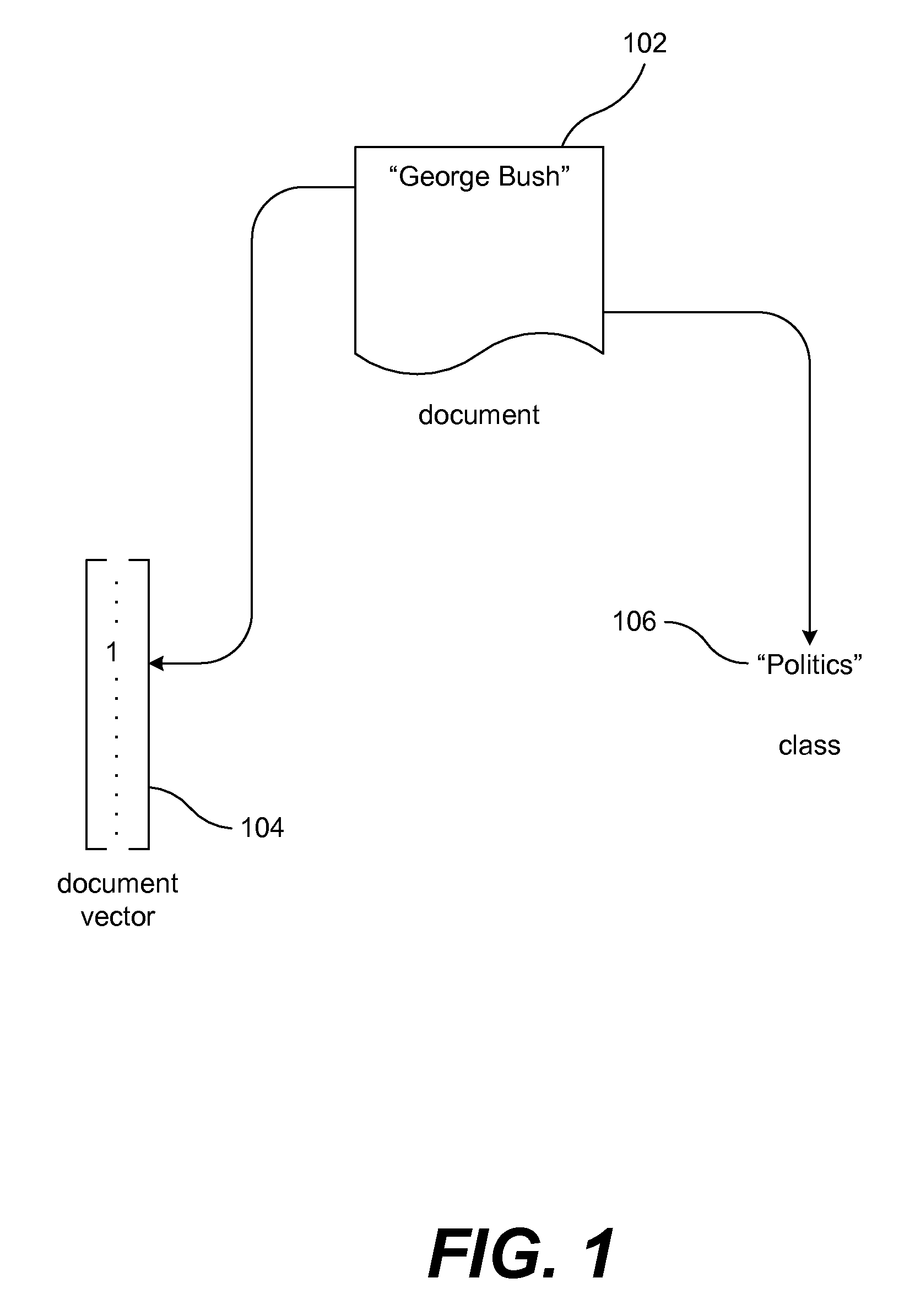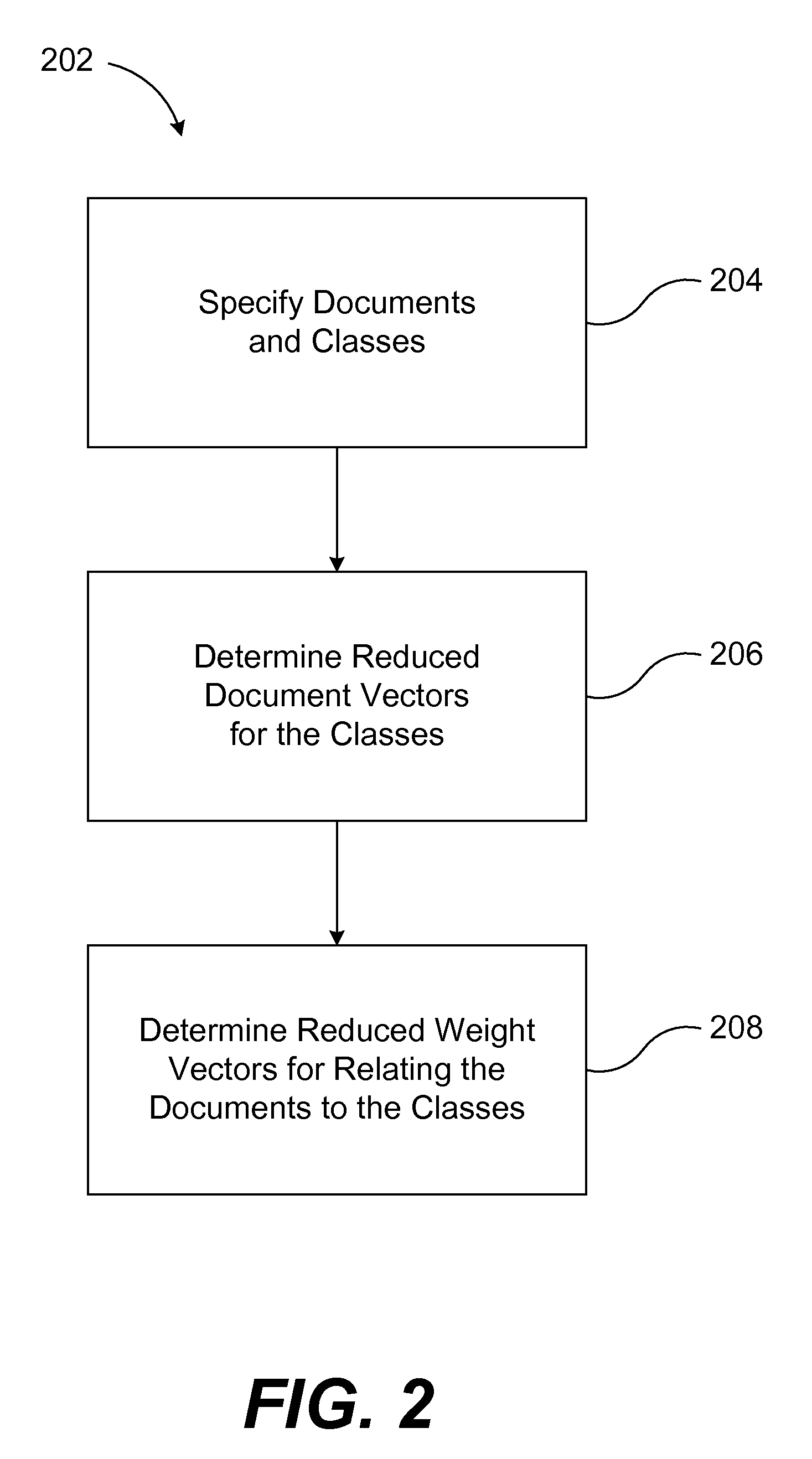Method for efficiently building compact models for large multi-class text classification
a multi-class text and compact technology, applied in the field of data analysis, can solve the problems of difficult loading of models with such a large number of weights during deployment, difficult memory handling of training process, and prohibitively large number of variables
- Summary
- Abstract
- Description
- Claims
- Application Information
AI Technical Summary
Benefits of technology
Problems solved by technology
Method used
Image
Examples
Embodiment Construction
[0030]Multi-class text classification problems arise in document and query classification problems in a variety of settings including Internet application domains (e.g., for Yahoo!). Consider for example, news stories (text documents) flowing into Yahoo News platform from various sources. There may be a need to classify each incoming document in to one of several pre-defined classes, for example, say one of 4 classes: Politics, Sports, Music and Movies. One could represent a document (call it x) using the words / phrases that occur in that document. Collected over the entire news domain, the total number of features (words / phrases in the vocabulary) can run into a million or more. For instance, the phrase, George Bush may be assigned an id j and xj (the j-th component of the vector x) could be set to 1 if this phrase occurs in the document and 0 otherwise. This is a simple binary representation. However, more general frequency metrics can be used. For example, an alternative method of...
PUM
 Login to View More
Login to View More Abstract
Description
Claims
Application Information
 Login to View More
Login to View More - R&D
- Intellectual Property
- Life Sciences
- Materials
- Tech Scout
- Unparalleled Data Quality
- Higher Quality Content
- 60% Fewer Hallucinations
Browse by: Latest US Patents, China's latest patents, Technical Efficacy Thesaurus, Application Domain, Technology Topic, Popular Technical Reports.
© 2025 PatSnap. All rights reserved.Legal|Privacy policy|Modern Slavery Act Transparency Statement|Sitemap|About US| Contact US: help@patsnap.com



